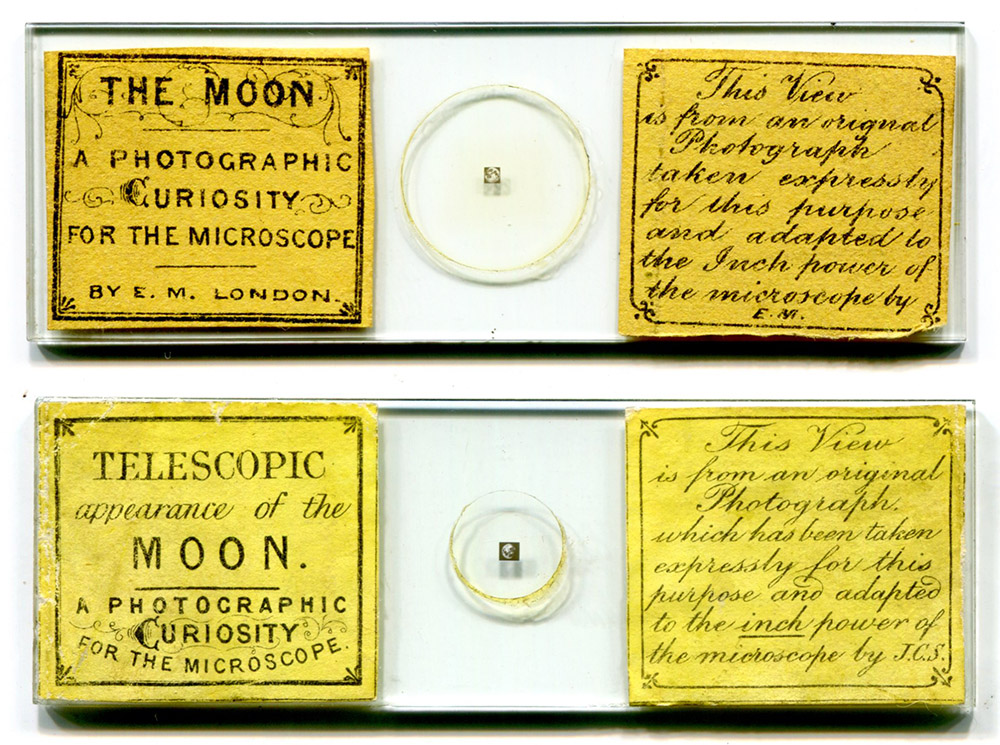
Figure 1. Microphotograph slides of the Moon, prepared ca. 1860 by E.M. (top) and John C. Stovin (bottom). The as-yet unidentified E.M. probably copied the style of the famous Stovin to attract attention toward his preparations.
Unknown Microphotograph Maker "E.M."
by Brian Stevenson
last updated February, 2025
A London-based person with initials E.M. produced a microphotograph slide of the full Moon circa 1860 (Figures 1 and 2). It appears to have been the only microphotograph from this person. The format used by E.M on their slide labels, with "A Photographic Curiosity for the Microscope" on the left, and a cursive description on the right, are almost identical to the labels of a Moon microphotograph produced at that time by John C. Stovin (J.C.S.) (Figure 1). The photographs of the Moon used by E.M. and J.C. Stovin were distinct, with E.M. using an image of a full Moon, while Stovin used an image of a waxing gibbous Moon (Figure 2).
Although John B. Dancer invented the techniques of producing microphotographs and is now the best-known maker of such slides, Stovin was probably better known during the 1860s. Among other things, Stovin was based in London, where the bulk of microscopical studies were undertaken, while Dancer was based in provincial Manchester. Of note, both Stovin and Dancer exhibited at the 1862 London International Exhibition, yet Stovin and not Dancer was mentioned by the local press.
The similarities between the labels used by E.M. and J.C. Stovin, and the relative fame of Stovin, suggest that E.M. copied Stovin's style in order to confuse customers to buy E.M.'s production instead of Stovin's.

Figure 1.
Microphotograph slides of the Moon, prepared ca. 1860 by E.M. (top) and John C. Stovin (bottom). The as-yet unidentified E.M. probably copied the style of the famous Stovin to attract attention toward his preparations.
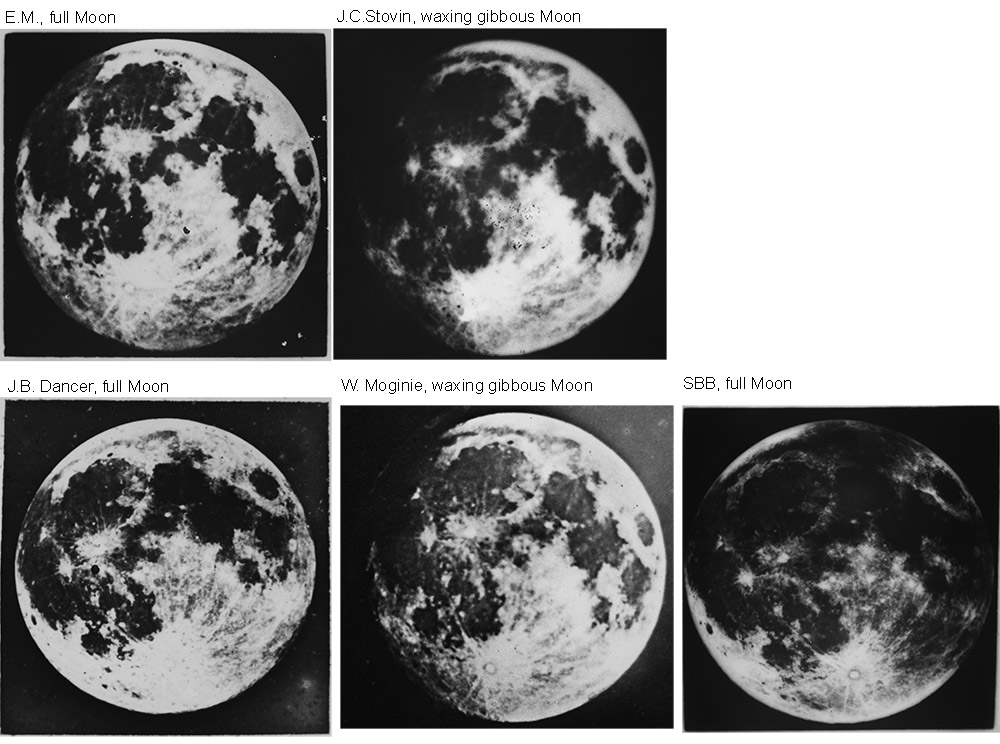
Figure 2.
Images of microphotographs of the Moon that were prepared/retailed by E.M., John C. Stovin, and other mid-/late-1800s slide-makers. Note that E.M. and Stovin used photographs of different phases of the Moon. Differences in orientation and detail suggest that each maker sourced a different print to make their microphotographs, although it is possible that some of those source pictures were reproduced from the same original lunar photograph. The photograph used by Smith, Beck & Beck (SBB) was originally taken by Warren de la Rue (1815-1889), probably in 1858 or 1859.
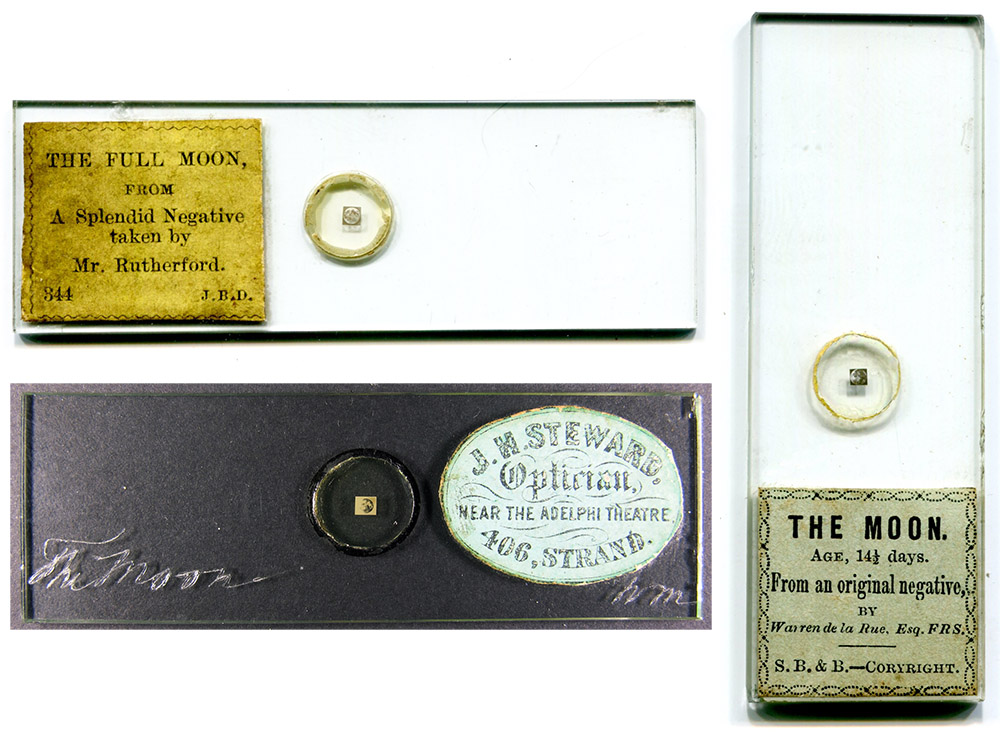
Figure 3.
Examples of other microphotograph slides that also show the full or waxing gibbous moon, produced by John B. Dancer, William Moginie, and Smith, Beck & Beck. From the author's collection or by permission from Richard Courtiour.
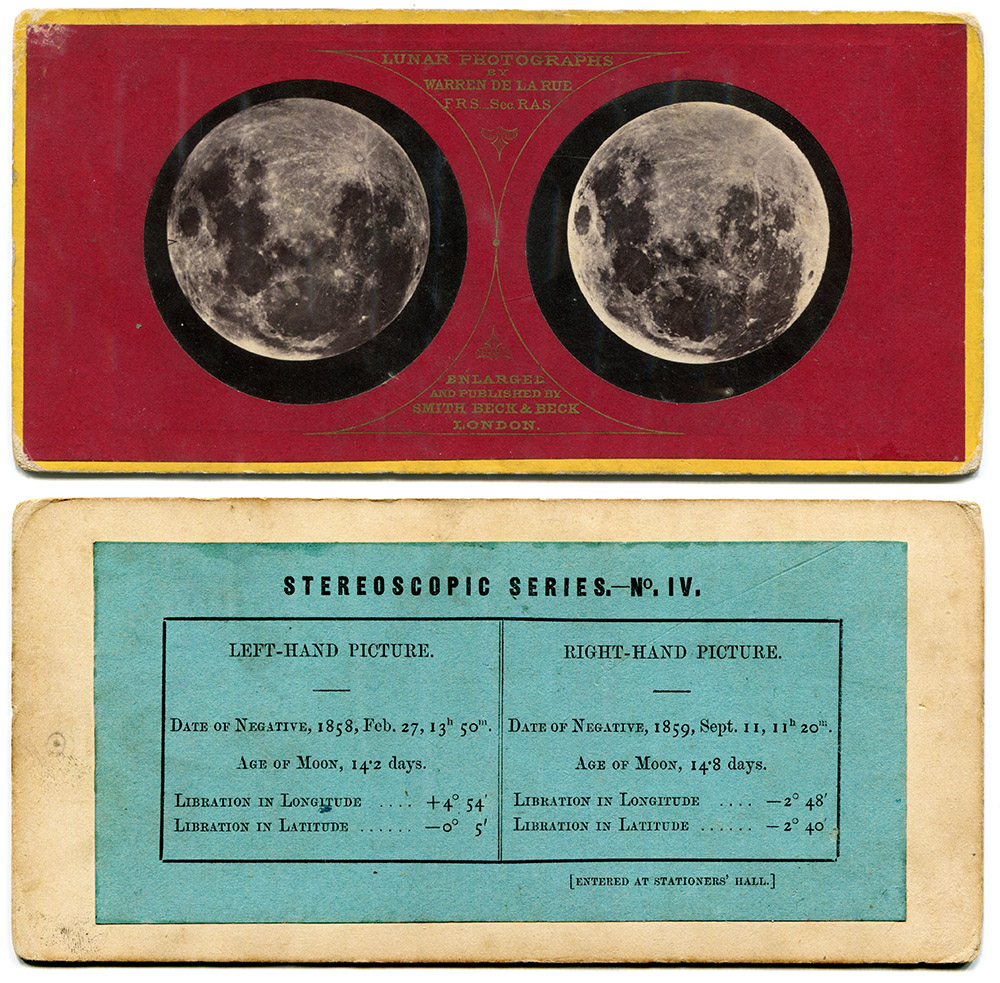
Figure 4.
Smith, Beck & Beck also sold stereoviews of the Moon. Based on photographs by Warren de la Rue (1815-1889), the paired photographs were taken at different times, resulting is differences in crater shadows that give a three dimensional-like result.
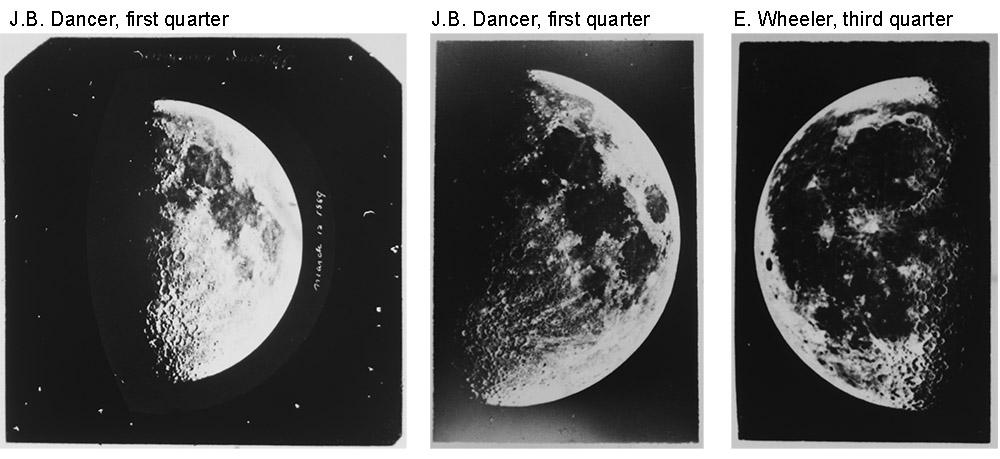
Figure 5.
Microphotographs of quarter Moons, produced by John B. Dancer and Edmund Wheeler. The Dancer microphotograph on the left includes his name and a date, March 12, 1859 (see Figure 6). The label on the middle microphotograph states that it was prepared from an original photograph by Lewis M. Rutherfurd (1816-1892), who produced astronomical photographs from his New York City observatory from 1858 onward (see Figure 11). The image in the Wheeler microphotograph appears to be identical to one retailed by Dancer and credited to Rutherford (see Figure 9).

Figure 6.
Close up images of the date and signature in the Dancer microphotograph on the left in Figure 5. The date was probably on the original photograph, while Dancer's name was written on his negative.
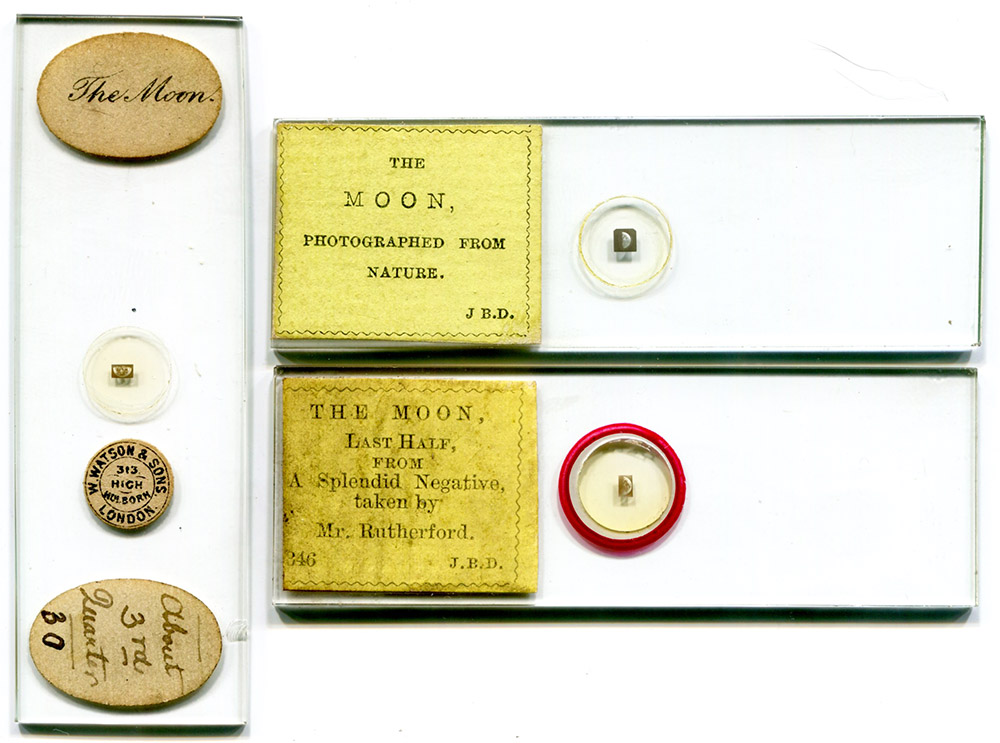
Figure 7.
Microphotograph slides shown in Figures 5 and 6. The label on Dancer slide 346 (lower right) is incorrect – the image is actually of the first quarter (first half), which Dancer listed as number 345 (see Figure 9). It is likely that the slide was mislabeled during production. Edmund Wheeler sold his stock of microscope slides to W. Watson & Sons in 1884, so his preparations often carry Watson retail stickers.

Figure 8.
"The Moon, Two Phases, Gibbous and Full", ca. 1860 by Edmund Wheeler.
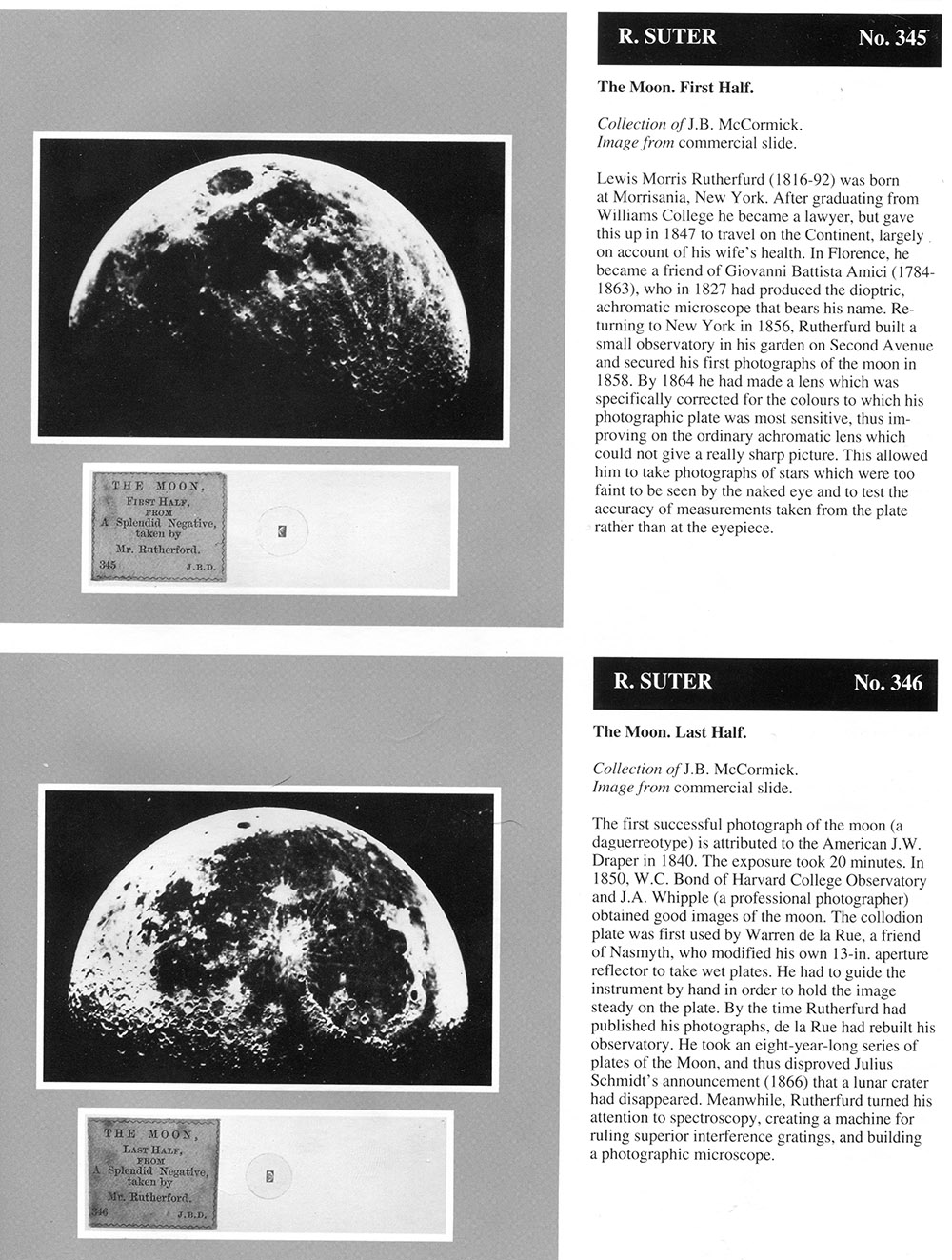
Figure 9.
Page 239 from Bracegirdle and McCormick's "The Microscopic Photographs of J.B. Dancer", illustrating Dancer's slides 345 and 346, both of which are photographs of the Moon by L.W. Rutherfurd. A different version of the image used for slide number 345 is shown below in Figure 10. Adapted for nonprofit, educational purposes.
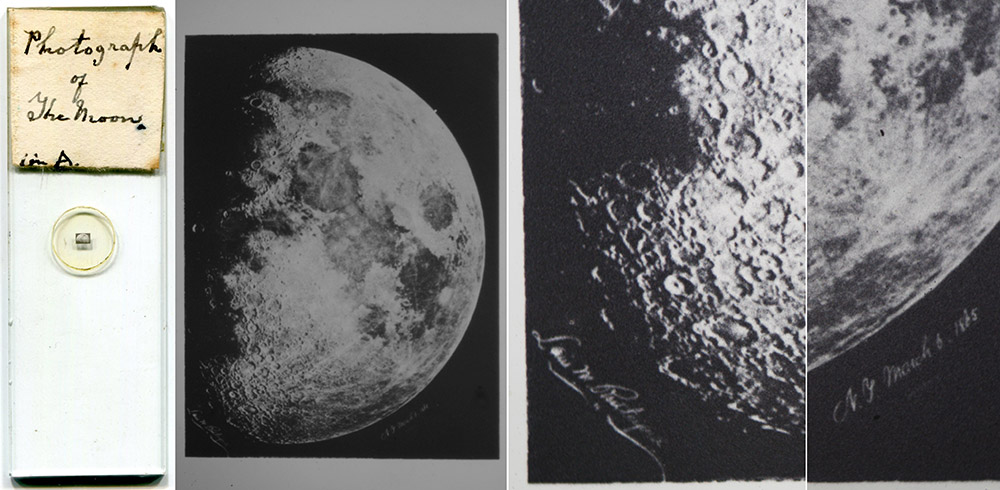
Figure 10.
Microphotograph by an unknown maker, the first quarter Moon as photographed by Lewis M. Rutherfurd (1816-1892) on March 6, 1865. This microphotograph includes Rutherfurd's name and the date. The same image was used in Dancer's slide number 345, but lacked Rutherfurd's information (Figure 9).
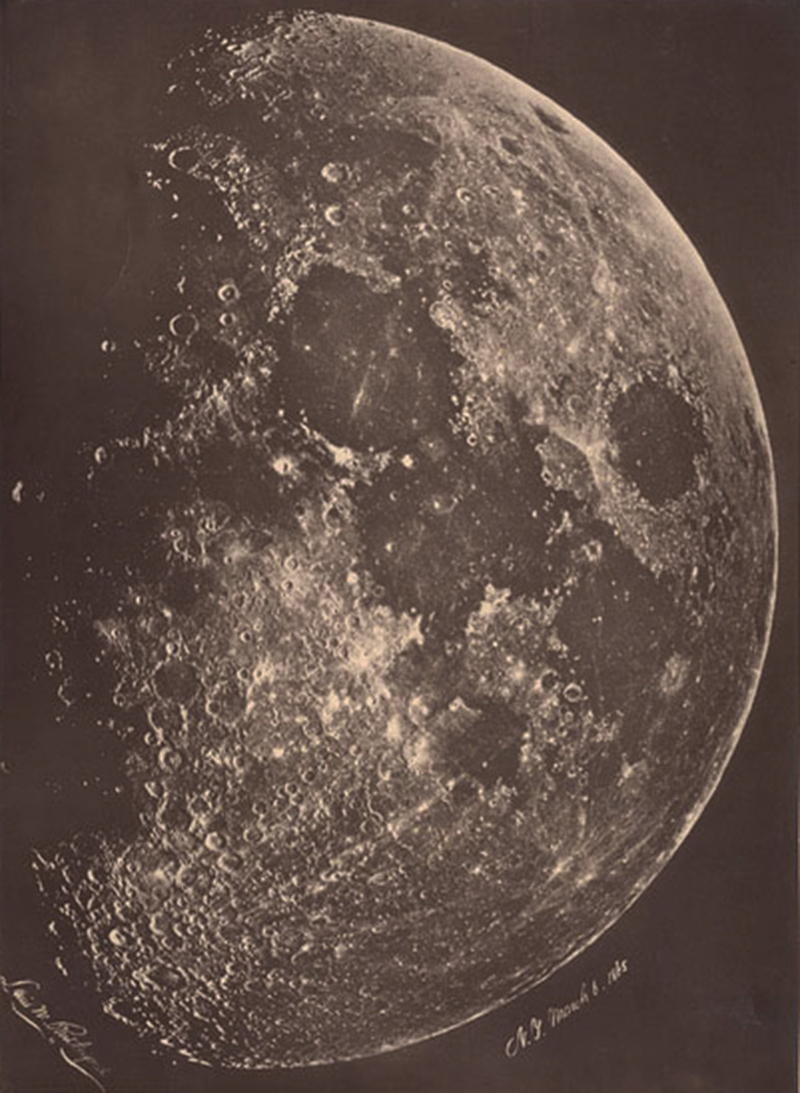
Figure 11.
Lewis M. Rutherfurd's photograph of the Moon that was taken on March 6, 1865 in New York City. This image was used to produce the microphotographs shown in Figures 5, 9, and 10. Adapted for nonprofit, educational purposes from the Bowdoin College Museum of Art, https://www.bowdoin.edu/art-museum/news/2019/img/museum-of-art-object-of-the-month-the-moon-in-first-quarter-by-lewis-morris-rutherfurd.html
Acknowledgement
Thank you to Richard Courtiour for generously sharing images and ideas.
Resources
Bracegirdle, Brian, and James B. McCormick (1993) The Microscopic Photographs of J.B. Dancer, Science Heritage Ltd., Chicago, page 239
The Photographic News (1863) The International Exhibition, “reduced copies of pictures for microscopic examination; the results, although partaking of the character of toys, may yet become of important application. Mr. Reeves (United Kingdom, 3144), Mr. Stovin (United Kingdom, 3163), and M. Dagron, France, 1546), exhibit interesting specimens in this class”. Vol. 7, pages 227